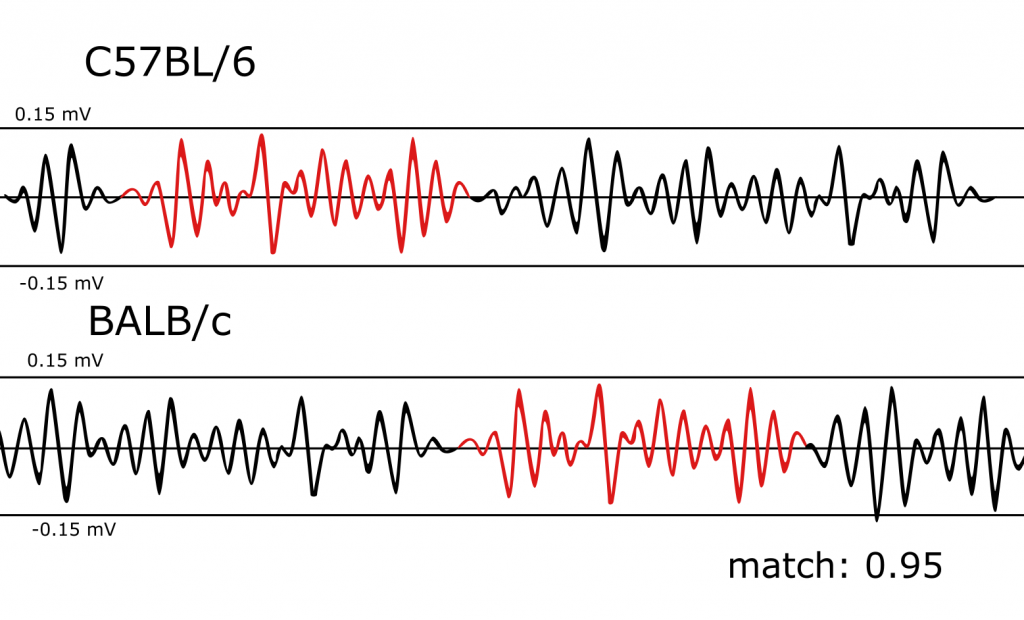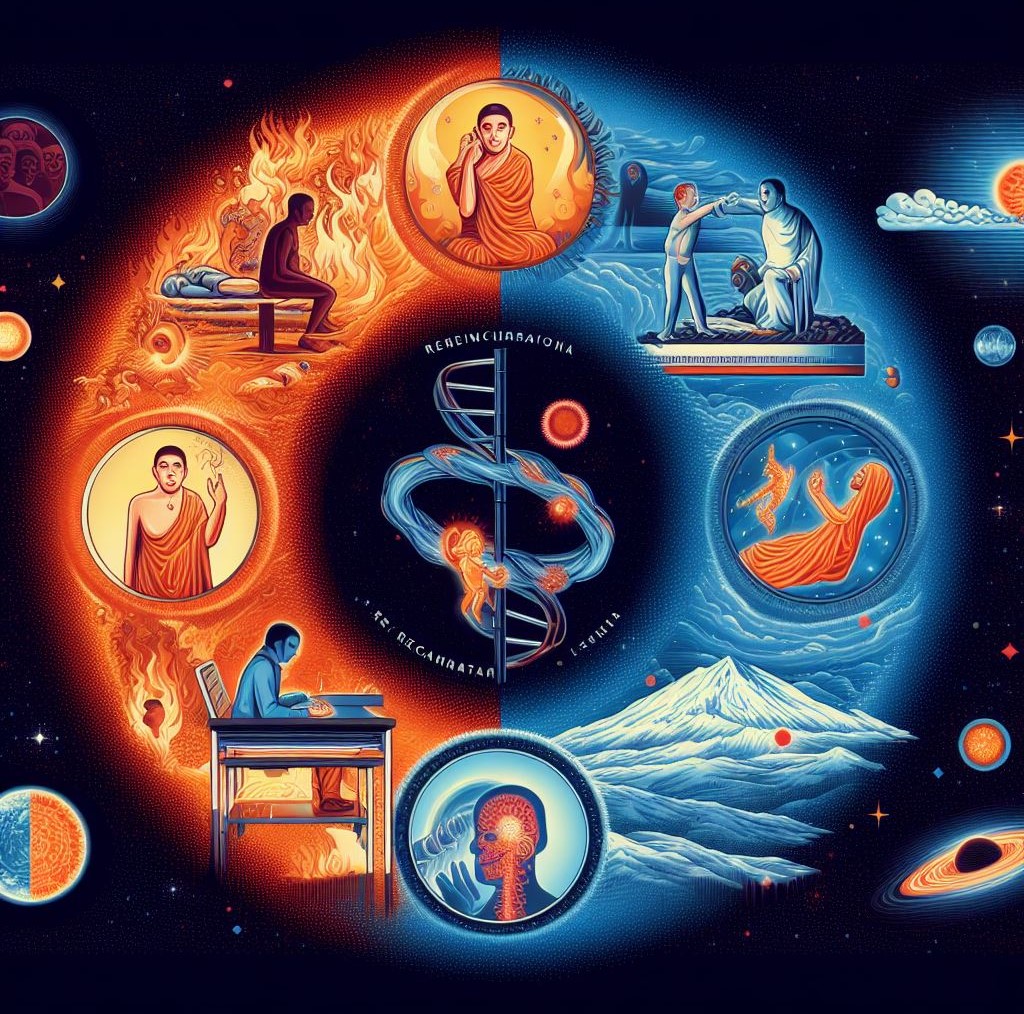Don’t be deceived. This article is a joke. It parodies a news article and mocks similar sensational writings. By the way, reincarnation is unbiblical.
Indian scientists claim that they have discovered evidence of reincarnation in a large colony of mice.
Have you ever wondered if your beloved Cocker Spaniel is actually your reincarnated grandmother? Wouldn’t it be cool if you could know that the soul of someone you loved was still by your side? Well, just last Thursday, behavioral experts Laasya and Kabir Gupta published a groundbreaking paper providing incontrovertible evidence for reincarnation.
What is reincarnation?
Reincarnation is the idea that after a living being dies, its soul is reborn in a new body. This process of death and rebirth can happen hundreds of times over.
According to a credible spiritual source, “Life does not end at the death of the physical body. The body dies but the soul does not. It lives on in a counterpart of the physical body which is called the astral body…. This same cycle is repeated many times until the soul spiritually unfolds and reaches a certain state of perfection or mature evolution.”
Once the soul is perfect, the state it reaches is called Moksha. At this point, the soul no longer has to be reborn, and instead can reside in perfect union with the gods.
The Rodent Reincarnation Project

The logo for the Rodent Reincarnation Project (view branded products for sale here)
More than fifteen years ago, Kabir Gupta came up with the most creative idea: What if EEG-based biometric identification could be used to identify individuals across lifetimes? His idea began a fifteen-year-long process of studying, funding, building, and managing what would come to be known as the Rodent Reincarnation Project.
Using some scientific facts and their understanding of Neo-Hindi ideas, Kabir and his wife Laasya determined what the experiment should look like.
First, they decided that the creature being tested for reincarnation would be mice. Rodents are well known for being used in scientific experiments due to their many similarities to human physiology and being rather easy to manage.
Next, the question “How many mice?” came upon them. The problem was that there is an average of 20 billion mice worldwide. According to their initial assumptions, every mouse’s soul is equally likely to be reborn somewhere randomly around the globe into another mouse (except for the small percentage of transspecies reincarnations). Because of this, initial estimates required millions of mice in order for the experiment to be successful.1 Yet, upon further study of Hindi writings, Laasya and Kabir decided that evidence of a “local reincarnation force” would allow the experiment to continue.
According to their theory, the local reincarnation force makes it around two hundred times more likely for a creature to be born in a similar area. With these numbers, there is a 99% chance that a mouse would be reborn in a colony of 100,000 mice within 10 years.2 The “ten years” part is important because in order for the experiment to work, there must be death and rebirth within the colony. Kabir said to us, “With such a high chance of success, we knew we had to try.”
Funding and building
Surprisingly, the Guptas were easily able to convince the Indian government to fund their expansive experiment, and they were let on as members of the Institute for Religion’s Department of Paranormal Studies.
After funding was secured, they began work on an 80,000-square-foot building that would cost ten million dollars to build. On one floor was the controlled habitat of mice, and on the other were the offices, data banks, the wireless EGG collection area, and the mouse care units.
Laasya, who is also an animal care expert, designed the immersive mice habitat. It contained waterways, tall bushes, and a variety of plants. While Laasya tried to have most of the food grown in the mouse habitat itself, they ended up spending one hundred thousand a year on food and nutrients.
Other yearly expenses included five million per year on utilities, maintenance, cleaning, and other related tasks. And another five million per year on worker salaries and lab-related expenditures. This all goes to say that this was no small project. The care and upkeep of one hundred thousand mice is no joke.
The Technology
Finally, Kabir, who also specializes in computer science, created thousands of inexpensive Bluetooth brainwave chips that they installed in all of the mice’s brains. In their paper, it says, “Over their entire lifespan, ranging from birth to death, we recorded EEG signals daily for a duration of 10 minutes.”
Kabir told me that ten minutes of EEG information created around 700 gigabytes of data per day. He said, “Managing this substantial volume of data involved utilizing a 2500-terabyte server, backed by the computational power of a supercomputing system, for training our Artificial Neural Network.”
This neural network is an almost %100 effective EEG-based biometric identification system. It works by identifying patterns in the brainwaves of mice, and it is able to tell which mouse is which by comparing brainwave patterns. The unique patterns in brainwaves are very similar to how humans can be identified by the unique patterns on their fingerprints. This is why EEG identification is sometimes called brainprinting.
The Artificial Intelligence is so accurate that Kabir told me, “If Ann,”—“Ann” is Kabir’s term of endearment for the AI—“says that a mouse is the same individual, then you’d be crazy to conclude otherwise.”
What did the Indian team achieve?
Now, you may be wondering: “What were the results? Did they find any reincarnated mice?” Probably.
As they say in their paper, reincarnation was “defined as a mouse being reborn in the same colony with an identical EEG pattern to its predecessor.” In the end, they found three such mice.
Two of the mice matched the Gupta’s theory of the local reincarnation force, while the third was partially a surprise.
Ceibal and Balby

Above is a diagram with some test results from Ann. The squiggly lines going left and right are the EEG waves. The squiggly line on the top is an EEG reading from mouse C57BL/6 (I’ll call this mouse Ceibal), and the one on the bottom is of mouse BALB/c (I’ll call this one Balby).
Ceibal lived before Balby, and after she died, Ann noticed similarities between their brainwaves. In the diagram, Ann has highlighted one such pattern match in red. This match means that each mouse shared a specific brainprint.
“It’s important to note,” Laasya said, “that these highly unique brainwave pattern similarities continued across each mouse’s entire lifetime, and nothing like this was found in any other mouse.” The Guptas also made sure to calculate the chance of this happening randomly, and they found that it was not possible.
The Black Karma Mouse
The third mouse that was identified is now known as a black karma mouse. While the Guptas had theorized of such a mouse, they did not expect to identify one, and neither did they guess many of the strange qualities it had.
For one, the black karma mouse had a poor past life memory and demonstrated “aggressive and antisocial behavior.” Plus, it seemed to be affected by an extremely strong local reincarnation force. This force was so strong that the mouse was reborn in the colony sixteen times! It was always the same gender (male) and had violent behavior in every lifetime.
What does this mean?
Reincarnation is real. We’ll have to wait until the study is confirmed to know for sure, but for now, I think it’s safe to say: “There’s something to Neo-Hinduism.”
Some scientists have already discussed alternative explanations for this study. Frederík Pascal’s theory called Brainwave Inheritance Theory, states that the brainwave patterns that are supposedly transferred across lifetimes are actually just passed down in the mouse’s genetic code. However, the Guptas have stated that this theory is lacking. The reincarnated mice were not closely related enough for genetics to be a factor, and this also does not explain away evidence of past memories and the continual aggressiveness of the black karma mouse.
The Guptas say in the conclusion of their paper, “Presenting compelling evidence supporting the presence of reincarnation and karma in mice, our study proposes the extension of these phenomena to encompass other animals and humans.” After all, if so many of their theories have been true already, is it really such a large jump in reasoning to go from believing in mouse reincarnation to believing in human reincarnation?
But how would human reincarnation be proven?
What’s next?
The team has modeled multiple versions of the experiment for people. The Guptas say, “Our research showcases the viability of employing EEG-based biometric identification systems for monitoring reincarnated individuals through successive lifetimes.”
One idea they had was building a non-invasive hearing-aid-like device that would occasionally record small levels of brainwave activity. With a few hundred thousand volunteers, they believe this version of the experiment could be successful.
Another idea, though it has a higher chance of false positives, is that everybody (or a lot of people) in the whole world gets an EEG done. And then in a few decades, take readings again. The reason why this one could have false positives is because less brainwave data per person equals a higher chance there will be a false match.
Their best idea so far, though, is to build a predictive model of reincarnation. A model like this would allow them to predict who an individual will be reincarnated into. This would allow them to take the EEGs of a few high-chance subjects after the person they made the predictions of died.
The Reality of Reincarnation
Regardless of how Laasya’s and Kabir’s experiment proceeds, the results of their experiment so far are sure to rock the foundations of the scientific community and of the world. The idea that reincarnation is real will challenge the worldview of millions, but they will have to get with the times or be left in the dust of the past.
In conclusion, Kabir said to me, “Reflecting upon the reality of reincarnation makes me think ever more of its beauty. As Guru Laghima said long ago,
‘In cycles vast, a cosmic dance, Soul's journey in a mystic trance. Reincarnation, a timeless art, A tale of life, a work of heart. ‘Through karmic ties, we ebb and flow, In myriad forms, our spirits grow. From dust to form, and form to dust, In life's grand script, we place our trust.’”
Rodent Reincarnation Project Products
Footnotes
- Using the final number of 100,000 mice, there would only be a 1 in 200,000 chance of a mouse being reborn in their facility! ↩︎
- Since the average lifespan of a mouse is six months, 20 billion mice must be born every six months to keep the population stable. In ten years, there are twenty death and rebirth cycles, which makes it far more likely that a reincarnated mouse would be detected. ↩︎




3 responses to “Scientists Discover Evidence for Reincarnation”
WOW I am soooo impressed at all this amazing research
The Guptas are truly amazing people.
They truly are my friend, they truly are